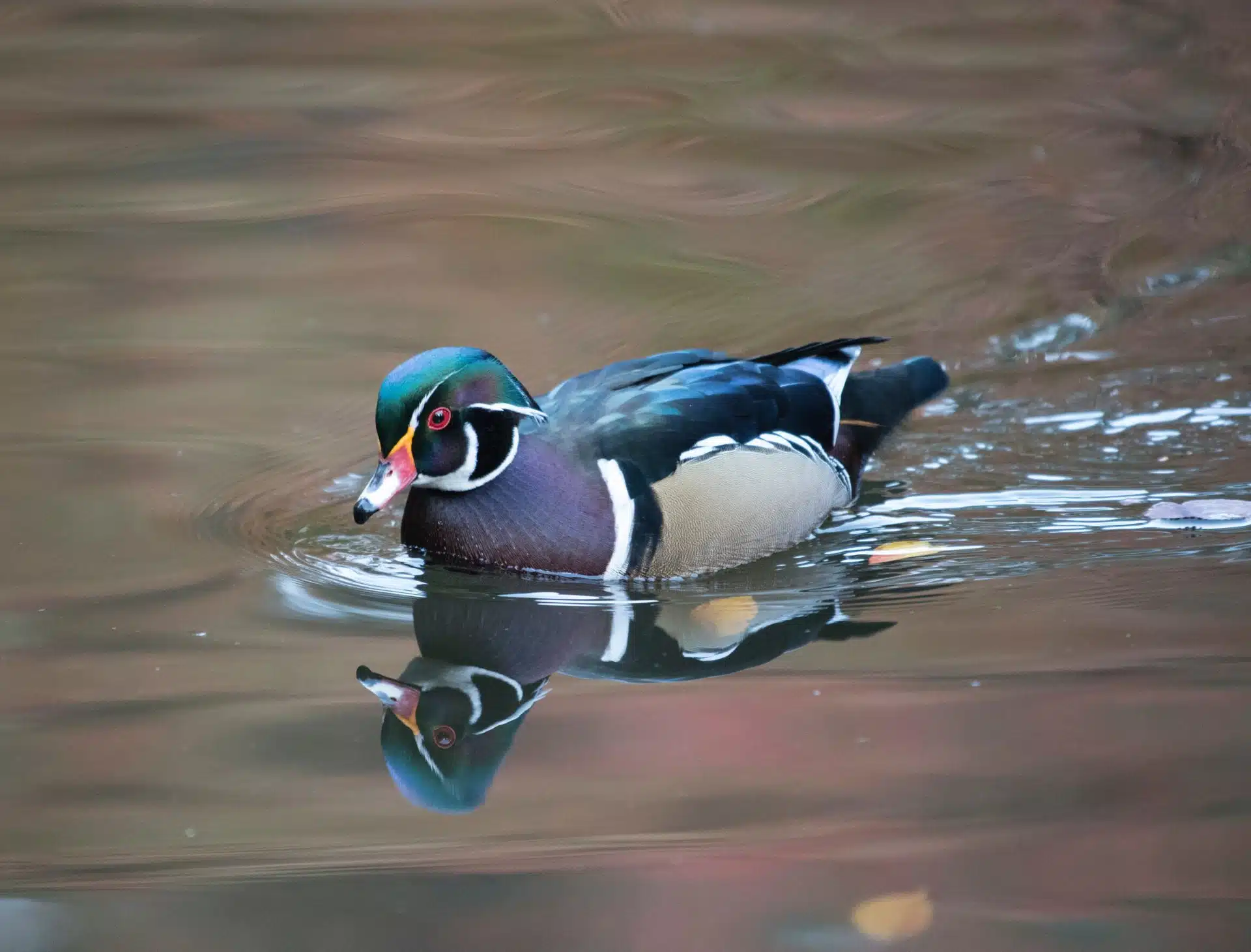Nature Profile
Birds
Wood Duck
Aix sponsa

Wood Duck
Voice: Female often calls "oo-eek, oo-eek" as it leaves an area
Today wood ducks are one of the most common breeding waterfowl species in the United States. Words cannot describe the vivid markings of the drake, male, wood ducks. Their lines and colors are so striking that during breading seasons they are consider by many to be the most beautiful of all waterfowl. Even hens, females, with their teardrop eye rings and iridescent plumage are quite stunning when compared to other duck.
Usually seen in pairs wood ducks prefer mature riparian corridors along streams, quiet lakes or ponds bordered by large trees, and secluded wooded swamps. Although somewhat shy, they can be observed feeding on a variety of nuts, fruits, aquatic plants, seeds, and aquatic invertebrates. Acorns, seeds of bald cypress, hickory, sweet gum, buttonbush, arrow-arum, bur-reed, and wild rice are important fall and winter foods. Juvenile wood duck feeding habits differ considerably from adult wood ducks. Before 6 weeks of age, ducklings feed consists on insects, aquatic invertebrates, small fish, and other high-protein animal cuisine.
Wood ducks are one of a few North American ducks that nest in trees. They are the only North American duck that regularly produces two broods in one year. Nesting begins early May in Ohio. Wood ducks nest in cavities, natural or man made, and often take over unoccupied cavities of a larger woodpeckers, 3 to 60 feet up in the tree. While they prefer to nest in cavities over water, there have been records of wood ducks nesting up to 1.2 miles away from water.
Female wood ducks usually lays 8-10 white or off white eggs in a bare, unless previously used by another bird, cavity. She alone sits on eggs for 28-32 days; taking only a short time in morning and evening to feed. With in a day after all the young have hatched, in response to the female’s call, using their clawed feet and bills they climb up to the entrance of the cavity then drop down to the ground to make their way to the water. They can drop from up to 75 ft high or more from a tree without injury. Young are tended for the next 56-70 days exclusively by the female.
What you can do to help! Wood ducks dramatically declined in late 19th century. Overhunting and logging of woodland swamps caused the duck to be on the verge of extinction. Luckily, current populations have stabilized or increasing much to the efforts of land preservation and hunting regulations. However wood ducks are still considered a popular game bird, and are second only to the Mallard in numbers shot each year in the United States. Consider supporting land preservation organizations and help create local wood duck breeding habitats for future generations.
Visit the following website for more details: ftp://ftp-fc.sc.egov.usda.gov/WHMI/WEB/pdf/woodduck(1).pdf
Best Location to View: Blueberry Pond, Buttonbush Bog, Corning Lake, Hourglass Pond
Range: Canada, North America
Size: Medium




